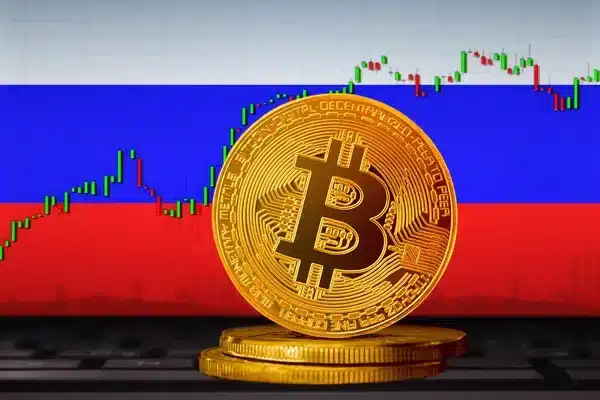Russia is taking a significant step to integrate cryptocurrency into its foreign trade strategy by launching two new cryptocurrency exchanges, one in Moscow and another in St. Petersburg. This development is part of the country’s broader effort to navigate international trade challenges amidst ongoing sanctions and regulatory hurdles.
Russia’s Crypto Strategy: New Exchanges for Global Trade
Russian authorities are pushing forward with plans to create two cryptocurrency exchanges, as reported by Kommersant. The first exchange is expected to operate through the existing St. Petersburg Currency Exchange, while the second is slated for Moscow. The Moscow Exchange’s operational structure is still under debate, with discussions centering on whether it should function as part of the Moscow Exchange or as a separate entity under special legal provisions.
This move is designed to fortify Russia’s position in the global crypto market, particularly as the nation seeks to mitigate the impact of Western sanctions. By launching these exchanges, Russia aims to facilitate foreign trade transactions that bypass traditional financial systems, which are increasingly inaccessible due to geopolitical tensions.

Stablecoins and Legal Challenges
In addition to launching new exchanges, Russia is also exploring the introduction of a stablecoin pegged to the Chinese yuan (RMB) and potentially linked to the BRICS currency basket. This initiative is part of a larger effort to strengthen financial ties with key global economies and diversify Russia’s cryptocurrency portfolio.
However, the creation of these stablecoins is fraught with difficulties. Oleg Ogienko, CEO of BitRiver, highlighted significant challenges related to the convertibility and liquidity of these digital assets. According to Russian law, stablecoins are classified as digital financial assets, which means they require an issuing entity to maintain their value—a task that could prove complex under current international financial constraints.
Experimental Legal Framework and Potential Risks
The proposed exchanges and stablecoins will operate under an experimental legal framework, allowing Russia to fine-tune its cryptocurrency regulations. Initially, these platforms will be available only to large corporations and major economic players, with smaller businesses and individuals gaining access later.
While this strategy could provide Russian businesses with new opportunities in international trade, it also poses considerable risks. The inherent transparency of blockchain technology could expose transactions to global scrutiny, increasing the likelihood of additional sanctions or restrictions.
Nikita Vassev, founder of TerraCrypto, expressed concerns about the potential success of these new exchanges. He pointed out that most users might favor established international platforms over the newly created domestic ones, unless they have no other options. Vassev also noted that the centralized nature of these exchanges might undermine user trust, further complicating their adoption.
Also Read: Russia’s Cryptocurrency Ban: Understanding the Controversy













Discussion about this post